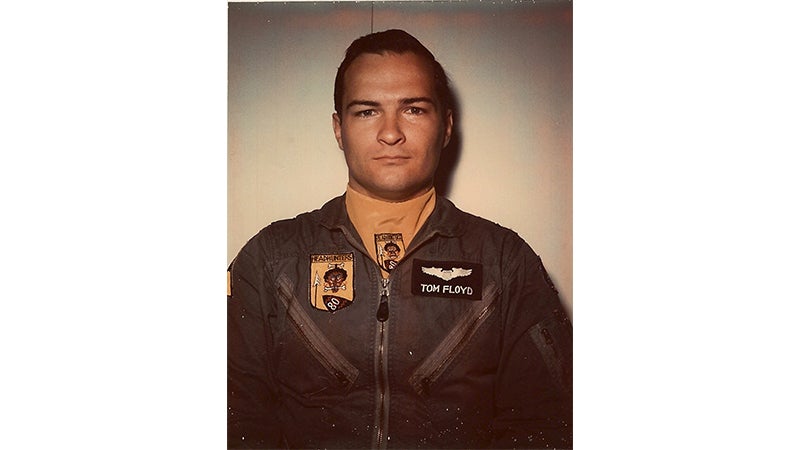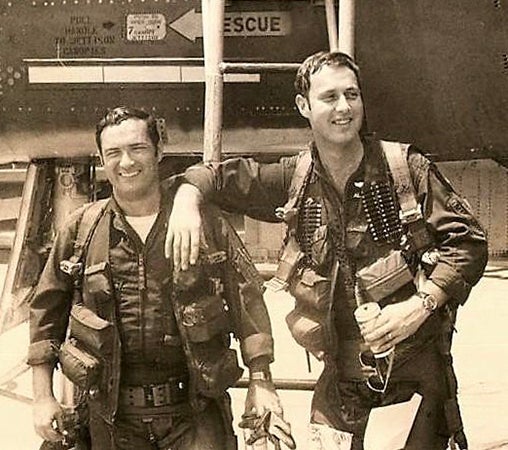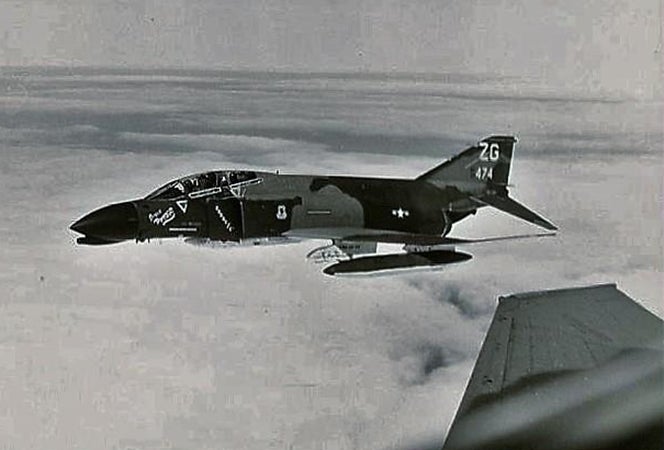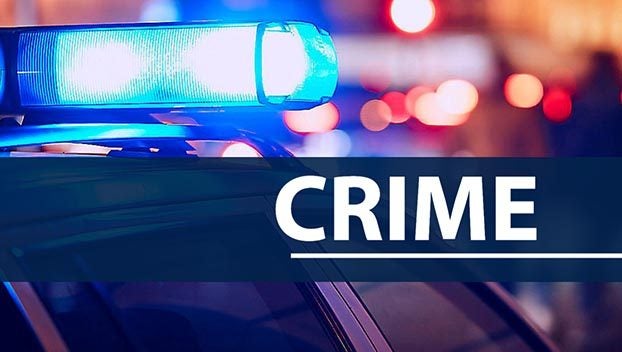Thomas W. “Tom” Floyd, Major, U.S. Air Force Pilot, Vietnam The Wild Weasels – Part 2
Published 4:00 pm Friday, February 24, 2023

- Captain Tom Floyd, newly assigned to 80th TFS [Wild Weasel] after completing WW training at Nellis AFB Nevada.[Photo: Tom Floyd]
|
Getting your Trinity Audio player ready...
|
[Continuation of Major Thomas Floyd from Part 1, WW will be used to designate Wild Weasel].
On September 25, 1972, Captain Tom Floyd and his Electronic Warfare Officer [EWO], Captain Al Palmer, flew the first combat mission of a F4CWW over Vien, N. Vietnam. They flew wing on an F-105WW. For the next six months, the six aircraft and nine air crews of the 67th Tactical Fighter Squadron [TFS], flew more than 470 combat missions over N. Vietnam. During that time, none of the aircraft would take a single hit from anti-aircraft fire, Sam missiles nor MIG fighters. Floyd and the 67th TFS had proved the combat worthiness of the F4CWW.
Linebacker 1 was halted for peace talks in October 1972. After the peace talks stalled, Linebacker 2 was begun on December 18. During the ceasefire period, the morale of the fighter crews was at a low point. Many felt that the war might be over soon and weren’t eager to be one of the last casualties.
Floyd recalled, “My Operations Officer called me aside on December 17 and told me that ‘I can’t tell you what is about to happen but you and Al need to make maps of downtown Hanoi.’ The next day we were told that Linebacker 2 would begin that night…Flight restrictions for engaging the enemy had been removed by President Nixon.”

Captain Tom Floyd, left, and Captain Al Palmer, right, beside their F4CWW after the intense mission over N. Vietnam which earned them both, the Silver Star. [Photo: Tom Floyd]
“There was an added problem of having the 130 B-52s fly in a line that took about 90 minutes to clear the target area…It was decided that four-ship Weasel formations would take off 20 minutes apart and be responsible for suppressing 16-18 SAM sights…We developed the ‘Code of the West’ where the flight leader took the hottest four or five SAM sights to suppress with 2 AGM-45 radar-homing missiles…The rest of the flight members were assigned four or five SAM sights in the same area, giving about eight AGM-45 missiles to cover 16-18 Sam sites for about 20 minutes – a seemingly impossible task, but for the most part, we did it.
“After we landed, the Weasels sent an eight-page, electronic message [TWIX] to SAC headquarters, recommending that they do away with WWII tactics. That first night we had seen six B-52s shot down by SAMs.”

The underside of Captain Tom Floyd’s F4CWW showing a typical Wild Weasel load of missiles.[Photo: Tom Floyd]
“There I was, canopy to canopy, about 2,000 feet above him and out of bullets…I had decided to launch an AGM-45 missile [air to ground] at him to scare him away when he suddenly broke off the attack, rolled inverted and dove into the clouds.
“I confirmed with Red Crown that we were clear of MIGs and then we proceeded to our assigned area over Hanoi…We were on the northern side of the train of B-52s, facing Hanoi, where we were able to intercept strong radar signals from SAM sites…We were able to get two confirmed kills with our AGM-45s. After that, Red Crown informed us that a MIG-19 was initiating an attack on us from the north…I turned hard into him and Al got a full radar system lock on him which caused him to break off the attack.”
By now, Floyd was out of bullets and low on fuel. He recalled, “We left the area and joined the tanker to refuel. We had been 40 minutes from tanker to tanker…We had probably saved four F4Ds, eight guys’ lives, negated three MIG attacks, killed two SAM sites but unfortunately had seen five more B-52s shot down. For that night’s work, Al and I were each awarded a Silver Star.”In the meantime, the B-52s changed their attack plans over N. Vietnam. The new attack plan hit numerous targets from different directions and different altitudes. The new shortened time over target cut B-52 losses significantly. Even with the new attack plans, there were 15 B-52 bombers lost during Linebacker 2. Captain Tom Floyd and his EWO, Captain Al Palmer, flew another 16 more WW missions over N. Vietnam before being transferred to Kadena Air Base, Okinawa in February 1973.
The Wild Weasel concept had proven its worth during Linebacker 1 and Linebacker 2 in 1972. Flying into some of the densest air defenses imaginable, the U.S. lost 49 aircraft, none of which were Wild Weasels. N. Vietnam launched more than 4,000 SA-2s missiles during the entire year giving them a ratio of 80 missiles required to bring down one plane.
After Vietnam, the U.S. kept improving the Wild Weasel program. F4GWWs were very successful during the first Gulf War. The new F-16WWs were successful during the second Gulf War.
In June 1973, Floyd was transferred to Eglin Air Force Base, Florida. He was the Project Officer for Air-to-Air Missiles for the next five years. After that, he was assigned to Osan Air Base, Republic of Korea, for one year as the Wing Flying Safety Officer. Floyd was promoted to Major in 1976.
Major Floyd was assigned to Bergstrom Air Force Base, Texas, as Wing Flying Safety Officer for two years before being sent to Williams Air Force Base, Arizona, as ranking instructor pilot for the F-5 trainer. Among the pilots that Floyd instructed at Williams were the King of Thailand, and a Squadron Commander for the Mexican Air Force. He also instructed the Wing Commander of the Egyptian Air Force which was transitioning from Russian MIG-21s to U.S. F-16 fighters.
Major Tom Floyd retired from the Air Force in 1985. His awards included the Silver Star, the Distinguished Flying Cross with five Oak Leaf Clusters, the Meritorious Service Medal with one Oak Leaf Cluster, the Air Medal with 19 Oak Leaf Clusters, the Air Force Commendation Medal, the Armed Forces Expeditionary Medal, the Combat Readiness Medal with four Oak Leaf Clusters, the Air Force Longevity Service Ribbon with four Oak Leaf Clusters, the Air Force Outstanding Unit Award with Valor with four Oak Leaf Clusters, the Republic of Vietnam Gallantry Cross, the Republic of Vietnam Campaign Medal and the Small Arms Expert Marksmanship Ribbon with four Oak Leaf Clusters.
He worked for the General Electric simulator division for five years as an F-5 instructor for foreign pilots. With 26 countries having bought the F-5 from Northrop, things were busy until General Electric closed down their simulator operation.
Tom Floyd’s wife, Lois, worked for the Barnett, Dulaney Eye Clinic in Phoenix. Tom began work for the clinic, driving patients all over Arizona. He retired in 2001 and the family moved to Prescott, Arizona, where they now reside. Tom and Lois are the parents of Bonnie Goodwin [Jim] and Jennifer Johnson [Quinn]. They have seven grandchildren.
John Vick
The author knew Tom Floyd during their time at Andalusia High School. It has been a distinct pleasure to recount his service in the U.S. Air Force and to share his pioneering work with the Wild Weasels in Vietnam.
[Sources: Wikipedia; “First In, Last Out – the Wild Weasels Story”, YouTube; sofrep.com; warhistoryonline.com]





